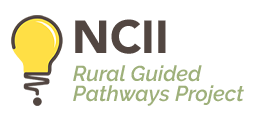Rural Guided Pathways is a three-year initiative to design and implement a more effective student experience.
 Congratulations to our partners at the Community College Research Center for their new book, More Essential Than Ever: Community College Pathways to Educational and Career Success.
Congratulations to our partners at the Community College Research Center for their new book, More Essential Than Ever: Community College Pathways to Educational and Career Success.
This book is a game changer for the field. Learn more about purchasing the book, downloading the free discussion guide, and viewing the related blog series.
Rural Guided Pathways is currently in Phase 2, which is running from 2025 through 2027. Phase 2 includes 28 colleges. Half of these colleges are continuing the work they started in Phase 1, which ran from 2022 through 2024.
In the first year of Phase 2, the 28 participating colleges have set implementation goals, had coaching site visits, attended two Institutes with intensive curricula, and worked on critical issues both at the Institutes and on their campuses. Institute #3 (March 11–13 in Pittsburgh) will focus on K–12 partnerships.
Participating colleges commit to:
- Designing and implementing a better student experience at their colleges.
- Ensuring that more students earn credentials and move on to living-wage jobs or transfer to a four-year institution with junior status.
- Collaborating with key stakeholders to increase economic opportunity in their region and be partners in the implementation of a cross-sector approach to guided pathways.
- Implementing evidence-based reforms that will lead to improved educational and workforce outcomes.
Colleges that are part of Rural Pathways work with each other — and with community partners in their regions — to implement evidence-based, institution-wide reforms grounded in the guided pathways framework. The project’s rural focus and in-depth participation of community partners set it apart from other guided pathways efforts.





